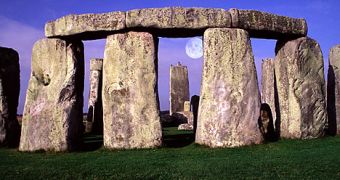A team of archaeologists are now arguing that, according to their latest investigations, Stonehenge started out as an ancient burial ground for the elite, and only later on got turned into the monument people nowadays are all too familiar with.
The archaeologists who pieced together this theory concerning Stonehenge's origins base their claims on a total of over 50,000 cremated bone fragments that they have recently excavated in this part of Britain.
Following their analyzing these bone fragments, the archaeologists have reached the conclusion that they used to belong to a total of 63 different individuals who used to live in this area around 3000 BC.
Professor Mike Parker Pearson, a researcher currently working with the Mike Parker Pearson University College London, is quite convinced that these people got buried in this location prior to the monument's taking its current form, Cleaveland Leader says.
“These were men, women, children, so presumably family groups. We'd thought that maybe it was a place where a dynasty of kings was buried, but this seemed to be much more of a community, a different kind of power structure,” explained specialist Mike Parker Pearson.
The researchers that succeeded in excavating these cremated human bone fragments also believe that, around the year 2500 BC, Stonehenge was a place where hundreds gathered to celebrate the winter and the summer solstice by taking part in communal feasts.
This practice is allegedly proven by the 80,000 animal bone remains that were unearthed at this location, archaeologists maintain.
As Mike Parker Pearson puts it, “Stonehenge was a monument that brought ancient Britain together. What we've found is that people came with their animals to feast at Stonehenge from all corners of Britain – as far afield as Scotland.”
By the looks of it, the people who came here to participate in such feasts were the ones who built the monument.
“In many ways, our findings are rewriting the established story of Stonehenge,” said researcher wished to emphasize.

 14 DAY TRIAL //
14 DAY TRIAL //